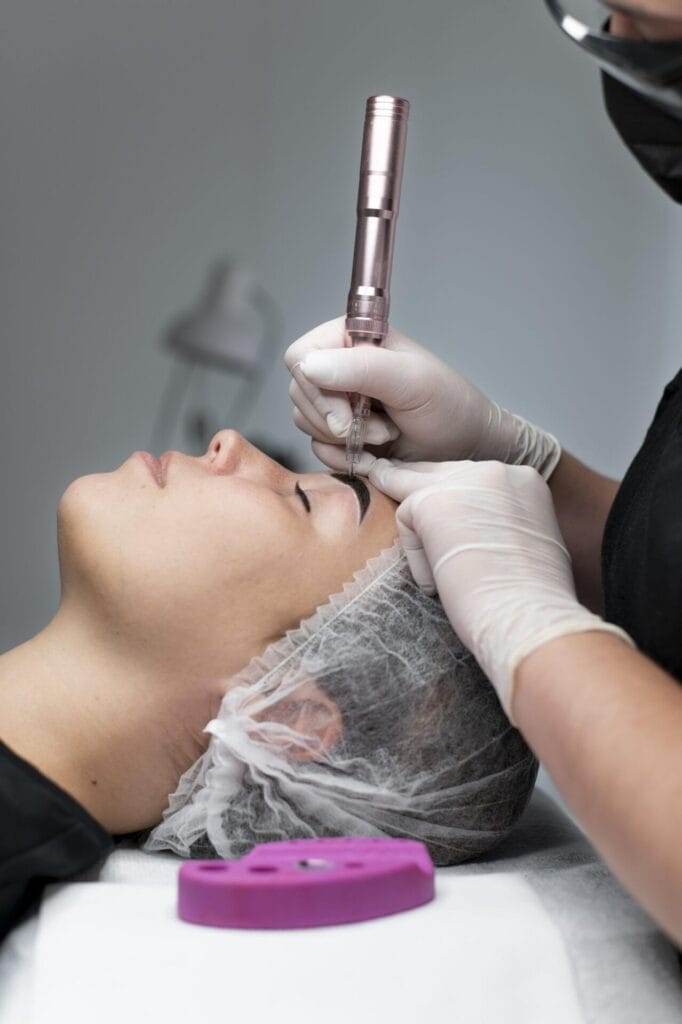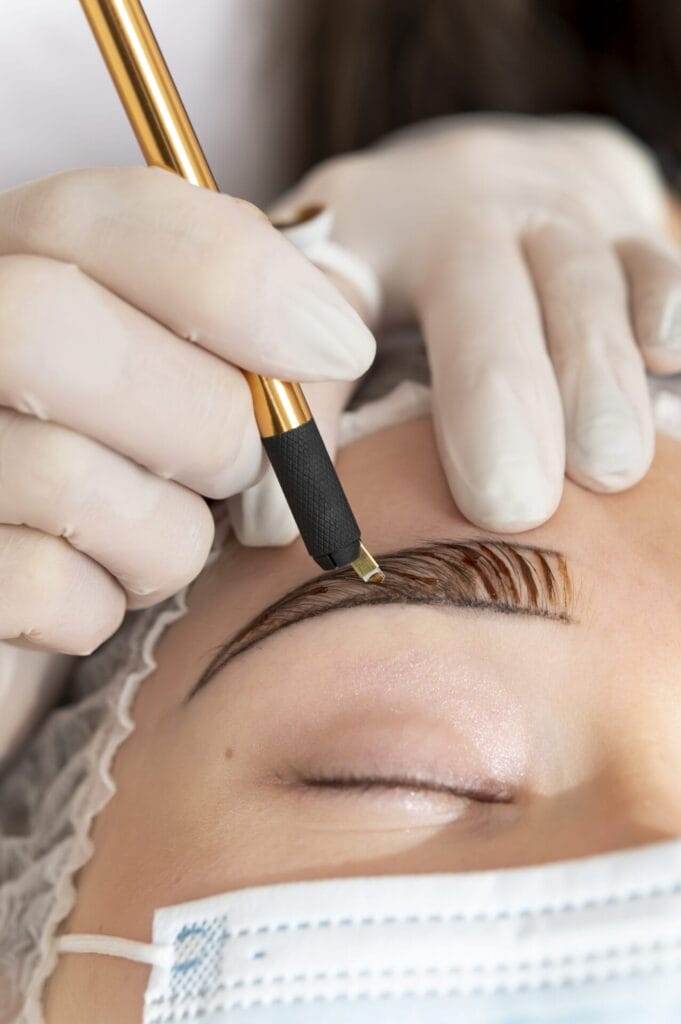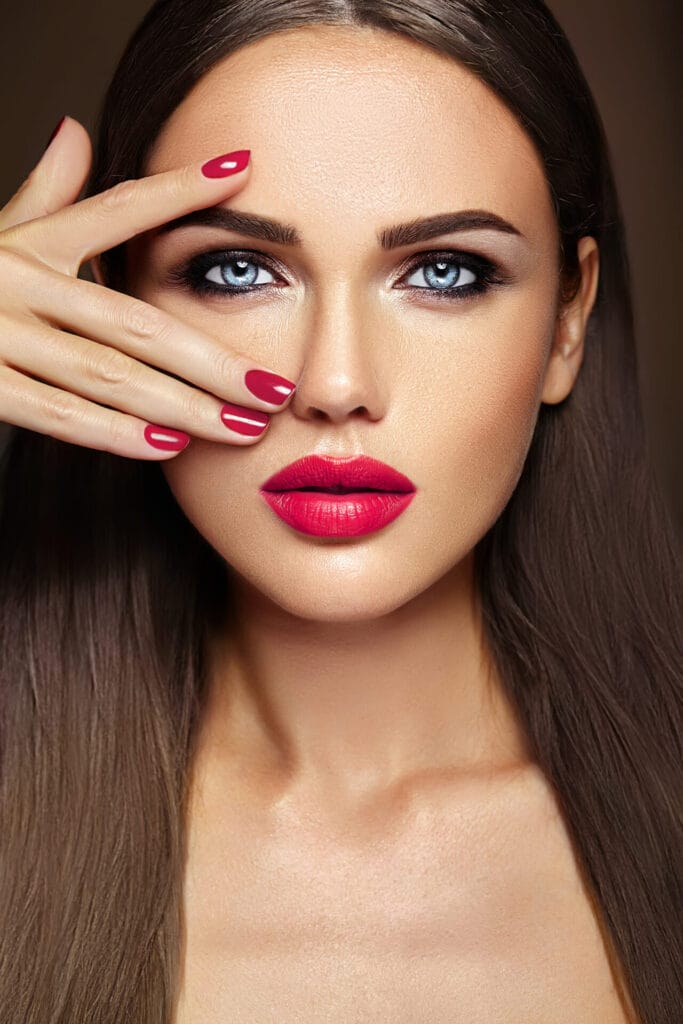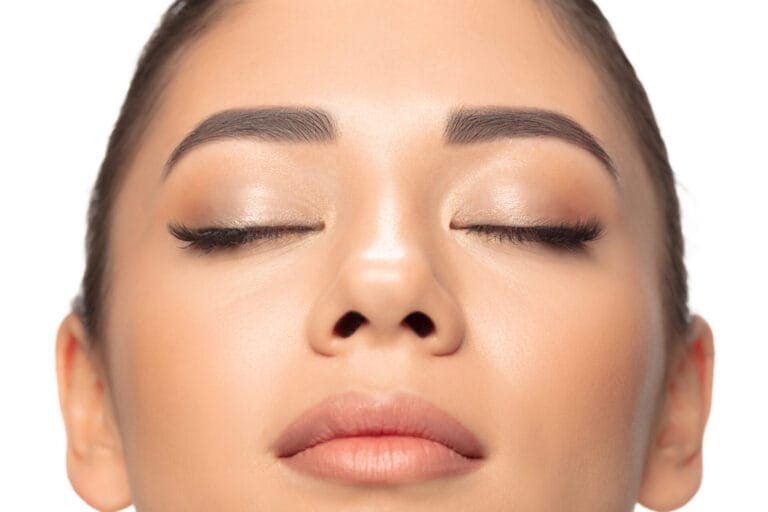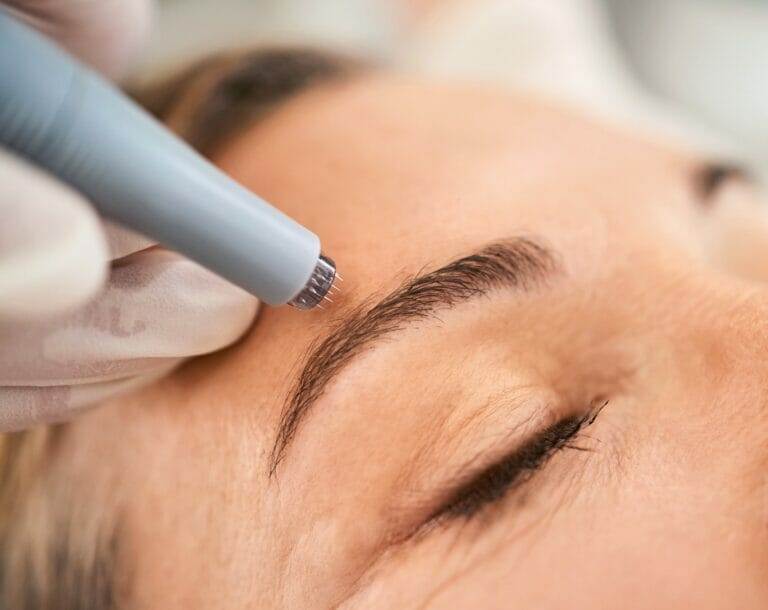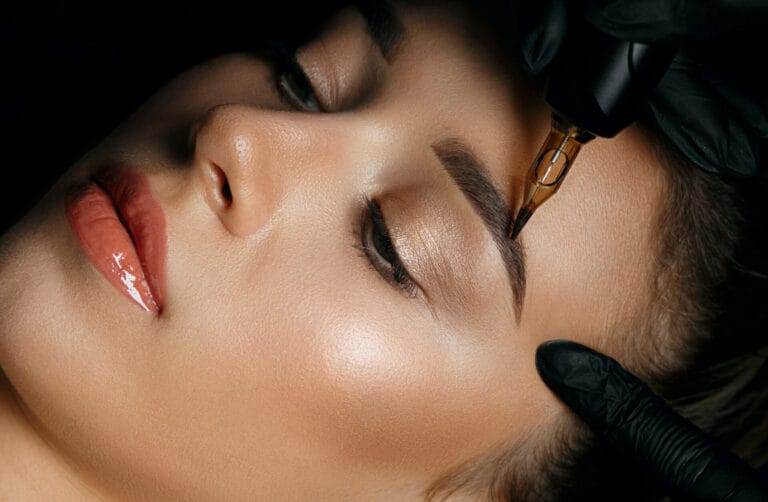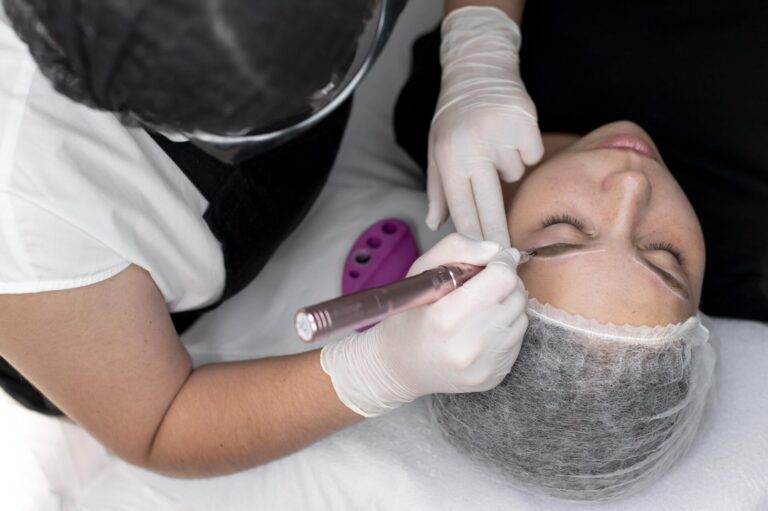Cosmetic tattooing, also known as permanent makeup or micropigmentation, has become increasingly popular in recent years. This innovative technique involves implanting pigment into the skin to enhance and define features such as eyebrows, eyeliner, and lips. While the concept of tattooing for cosmetic purposes may seem relatively new, its history can be traced back thousands of years.
The practice of cosmetic tattooing dates back to ancient civilizations such as Egypt and Rome, where women would use natural pigments to enhance their beauty. In more recent history, cosmetic tattooing gained popularity in the 20th century, particularly in the entertainment industry. However, advancements in technology and techniques have made it more accessible and widely accepted today.
Cosmetic tattooing is a form of permanent makeup that involves depositing pigments into the dermal layer of the skin. This is achieved using a handheld device or machine with a needle or blade attachment. The pigment is carefully chosen to match the client’s natural skin tone and desired look. The result is a long-lasting enhancement that can save time and effort in daily makeup routines.
Understanding the Different Types of Cosmetic Tattoos
There are several types of cosmetic tattoos that can be done to enhance different features of the face. Some of the most common types include eyebrow tattoos, eyeliner tattoos, lip blush tattoos, and beauty spot tattoos.
Eyebrow tattoos are one of the most popular forms of cosmetic tattooing. They involve creating hair-like strokes or shading to fill in sparse or thin eyebrows. This can help achieve a fuller and more defined brow shape.
Eyeliner tattoos are another popular choice for those who want to enhance their eyes without the hassle of applying eyeliner every day. This procedure involves tattooing a thin line along the lash line to create the appearance of fuller lashes or a more defined eye shape.
Lip blush tattoos are designed to enhance the natural color and shape of the lips. This procedure involves tattooing a soft wash of color onto the lips, giving them a more youthful and vibrant appearance.
Beauty spot tattoos, also known as freckle tattoos, have gained popularity in recent years. This procedure involves tattooing small dots onto the face to mimic natural freckles or beauty marks.
It’s important to note that cosmetic tattoos can be either permanent or semi-permanent. Permanent tattoos are designed to last a lifetime, while semi-permanent tattoos typically fade over time and may require touch-ups. The choice between permanent and semi-permanent tattoos depends on personal preference and desired longevity.
Benefits of Cosmetic Tattooing
There are several benefits to getting a cosmetic tattoo, which is why it has become such a popular choice for many individuals.
One of the main benefits of cosmetic tattooing is that it saves time and money on daily makeup routines. With permanent makeup, there is no need to spend hours each day applying and reapplying makeup. This can be especially beneficial for those with busy lifestyles or those who struggle with applying makeup due to medical conditions or disabilities.
Speaking of medical conditions and disabilities, cosmetic tattooing can be a game-changer for individuals who have undergone chemotherapy, have alopecia, or have other conditions that result in hair loss. Eyebrow and eyeliner tattoos can help restore confidence and provide a sense of normalcy for those who have lost their natural hair.
Cosmetic tattooing also has the ability to enhance natural features and create a more symmetrical appearance. For example, eyebrow tattoos can help correct asymmetrical brows or fill in gaps caused by over-plucking. Lip blush tattoos can add definition and color to pale or uneven lips. These enhancements can boost self-esteem and make individuals feel more confident in their own skin.
Factors to Consider Before Getting a Cosmetic Tattoo
Before getting a cosmetic tattoo, there are several factors to consider to ensure the best possible outcome and minimize any potential risks or complications.
One important factor to consider is your skin type and sensitivity. Some individuals may have more sensitive skin, which can affect how the pigment is absorbed and how the tattoo heals. It’s important to discuss any skin concerns with your tattoo artist before the procedure to determine if you are a suitable candidate for cosmetic tattooing.
It’s also important to consider any allergies or medical conditions you may have. Some individuals may be allergic to certain pigments or numbing agents used during the procedure. It’s crucial to inform your tattoo artist of any allergies or medical conditions so they can take the necessary precautions and use suitable products.
Personal preferences and expectations should also be taken into account before getting a cosmetic tattoo. It’s important to have a clear idea of what you want and communicate this with your tattoo artist. They can provide guidance and recommendations based on your desired look and what is achievable.
Preparing for Your Cosmetic Tattoo Appointment
Preparing for your cosmetic tattoo appointment is essential to ensure a smooth and successful procedure. Here are some tips to help you prepare:
1. Avoiding certain activities and products before the appointment: It’s important to avoid activities that can thin the blood, such as excessive alcohol consumption or taking blood-thinning medications, as this can increase the risk of bleeding during the procedure. Additionally, avoid using any skincare products that contain retinol or exfoliating ingredients on the tattooed area for at least a week before the appointment.
2. Discussing any concerns or questions with the artist: Before the appointment, take the time to discuss any concerns or questions you may have with your tattoo artist. They can provide guidance and address any worries you may have.
3. Arriving on time and prepared: On the day of your appointment, make sure to arrive on time and come prepared. This includes having clean skin free of makeup and wearing comfortable clothing.
By following these steps, you can ensure that you are well-prepared for your cosmetic tattoo appointment and maximize the chances of a successful outcome.
What to Expect During the Procedure

During the cosmetic tattoo procedure, there are several things you can expect:
1. Explanation of the process and tools used: Your tattoo artist will explain the process to you before starting the procedure. They will also explain the tools they will be using, such as a handheld device or machine with a needle or blade attachment.
2. Pain management options: Depending on your pain tolerance, your tattoo artist may offer pain management options such as numbing creams or local anesthesia to minimize discomfort during the procedure.
3. Communication with the artist during the procedure: Throughout the procedure, it’s important to communicate with your tattoo artist if you experience any discomfort or have any concerns. They can make adjustments or provide reassurance to ensure your comfort.
Aftercare and Healing Process
Aftercare is crucial for the proper healing and longevity of your cosmetic tattoo. Here are some important aftercare instructions to follow:
1. Proper care instructions for the tattooed area: Your tattoo artist will provide you with specific aftercare instructions for the tattooed area. This may include avoiding water, makeup, or certain skincare products for a certain period of time. It’s important to follow these instructions carefully to ensure proper healing.
2. Common side effects and how to manage them: It’s common to experience some side effects after getting a cosmetic tattoo, such as redness, swelling, and scabbing. Your tattoo artist will provide guidance on how to manage these side effects, which may include applying ointments or avoiding certain activities.
3. Timeline for healing and when to schedule a touch-up appointment: The healing process for a cosmetic tattoo can vary depending on the individual and the area that was tattooed. Generally, it takes about 4-6 weeks for the tattoo to fully heal. During this time, it’s important to avoid picking at scabs or exposing the tattooed area to excessive moisture or sunlight. Your tattoo artist will let you know when it’s safe to schedule a touch-up appointment if needed.
Potential Risks and Complications
While cosmetic tattooing is generally safe when performed by a trained professional, there are potential risks and complications that can arise. It’s important to be aware of these risks and take necessary precautions:
1. Possible allergic reactions or infections: Some individuals may be allergic to certain pigments or numbing agents used during the procedure. Additionally, if proper hygiene practices are not followed, there is a risk of infection. It’s important to inform your tattoo artist of any allergies or sensitivities you may have and ensure that they follow strict hygiene protocols.
2. Importance of following aftercare instructions: Failure to follow aftercare instructions can increase the risk of complications and affect the healing process. It’s crucial to follow the instructions provided by your tattoo artist to minimize the risk of infection or other issues.
3. When to seek medical attention: In rare cases, complications such as severe allergic reactions or infections may occur. If you experience any unusual symptoms or have concerns about the healing process, it’s important to seek medical attention promptly.
By being aware of these potential risks and complications, you can make informed decisions and take necessary precautions to ensure a safe and successful cosmetic tattoo experience.
Maintenance and Touch-Up Procedures
While cosmetic tattoos are designed to be long-lasting, they may require touch-ups over time to maintain their appearance. Here are some important things to know about maintenance and touch-up procedures:
1. Explanation of why touch-ups are necessary: Over time, the pigment in a cosmetic tattoo may fade or change color due to factors such as sun exposure, natural skin cell turnover, or lifestyle habits. Touch-ups are necessary to refresh the color and maintain the desired appearance.
2. How often touch-ups should be scheduled: The frequency of touch-ups depends on several factors, including the individual’s skin type, lifestyle, and desired look. In general, touch-ups are recommended every 1-2 years to maintain the vibrancy of the tattoo.
3. Cost of touch-ups and maintenance: The cost of touch-ups can vary depending on the artist and the extent of the touch-up required. It’s important to discuss pricing with your tattoo artist before scheduling a touch-up appointment.
By scheduling regular touch-ups and following proper aftercare instructions, you can ensure that your cosmetic tattoo remains fresh and vibrant for years to come.

Embracing Beauty That Lasts
Cosmetic tattooing offers a unique way to enhance natural features and save time on daily makeup routines. By understanding the different types of cosmetic tattoos, considering important factors before getting a tattoo, and choosing a reputable artist, individuals can achieve the desired results and minimize potential risks.
While cosmetic tattooing is a long-lasting solution, it’s important to follow proper aftercare instructions and schedule regular touch-ups to maintain the appearance of the tattoo. By embracing natural beauty and enhancing it with cosmetic tattooing, individuals can feel more confident and empowered in their own skin.

